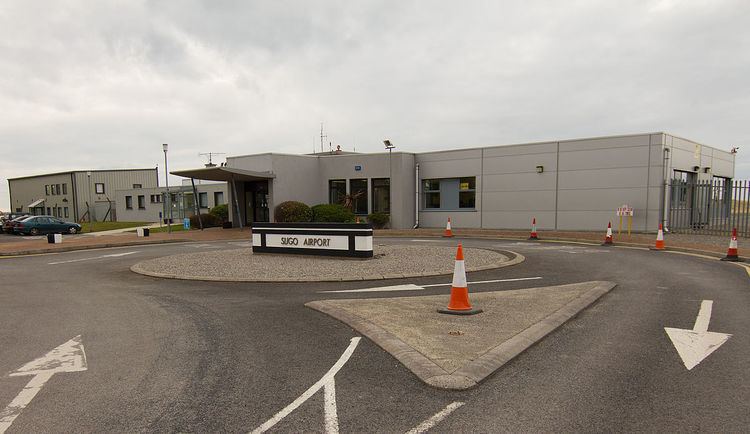Airport type Public Elevation AMSL 11 ft / 3 m Code SXL Province Connacht | Website www.sligoairport.com Elevation 3 m Phone +353 71 916 8280 | |
 | ||
Operator Sligo Northwest Airport Co Ltd Profiles | ||
Sligo airport last aer arann flight 21st july 2011
Sligo Airport (Irish: Aerfort Shligigh) is located in Strandhill, County Sligo, 5 NM (9.3 km; 5.8 mi) west of Sligo, at the end of the R277 road, in Ireland. The airport is a small regional airport and has no scheduled routes.
Contents
- Sligo airport last aer arann flight 21st july 2011
- Approach and landing at sligo airport eisg
- Introduction and history
- CHC Ireland Search and Rescue Base
- Accidents and incidents
- References
Approach and landing at sligo airport eisg
Introduction and history
Sligo Airport is the home of the Sligo Aero Club (a Registered Training Facility) and the northwest base for the Irish Coastguard. Private flight training, skydiving and charity jumps are all operated from the airport.
Like airports such as Gibraltar and Funchal, Sligo has a lack of safety margin for undershoots and overshoots because the peninsula upon which the airport is situated is less than 2 km (1.2 mi) long. In 2002 a Euroceltic Airways Fokker F27 aircraft carrying the band Aslan overshot the runway and the nose dipped into the sea. The accident caused no casualties.
Euroceltic was operating the Government of Ireland public service obligation subsidy scheme for the route to Dublin at the time. The airline collapsed shortly afterwards and Aer Arann operated the route for the remainder of the contract. The 2005 contract tender was offered to Loganair who declined it. Aer Arann subsequently negotiated the operation of the contract with the Government.
On 21 February 2007 the Irish Government announced that it would be giving €8.5 million to the airport in capital grant money, to upgrade the runway and add approach lighting and safety enhancements. However, the proposed runway extension would have required infill and the erection of gantries across part of the adjacent protected beach. The plan drew much local criticism and almost 400 objections from residents of the local area, fisheries groups, the Department of Environment, An Taisce and Birdwatch Ireland. The planning permission was quashed on the third attempt by a high court judge on justification grounds.
Until the end of 2008 there was a connection with Manchester Airport which was operated by Aer Arann. In 2011 the airport lost its only scheduled route, operated by Aer Arann, to Dublin Airport twice daily. The final flight was on 21 July 2011.
The Irish Government-commissioned Value for Money Review of Exchequer Funding on the Regional Airports Programme recommended the ending of operational subvention to the airport and the ending of the PSO designation, citing poor performance, growing operational costs and development of alternative transport connections to the region.
Since the ending of passenger flights in 2011 the airport has continued to be a base for the Irish Coast Guard Rescue Helicopter (Rescue 118). Sligo Aero Club continues to operate from the airport. The airport is always busy with general aviation aircraft including Cessnas, Pipers, and Beechcraft. The airport receives occasional visits from jets which are suited to land on the shorter runway.
CHC Ireland Search and Rescue Base
Sligo Airport is the home of Rescue 118, the Irish Coast Guard Helicopter which has served the north-west of Ireland since 2004. The base operates a Sikorsky S-92A helicopter 24 hours, 365 days a year (which replaced the previously used S-61N on 1 July 2013). It deals with many types of incidents, such as cliff rescues, hospital transfers, and dealing with sick patients off coastal islands.
